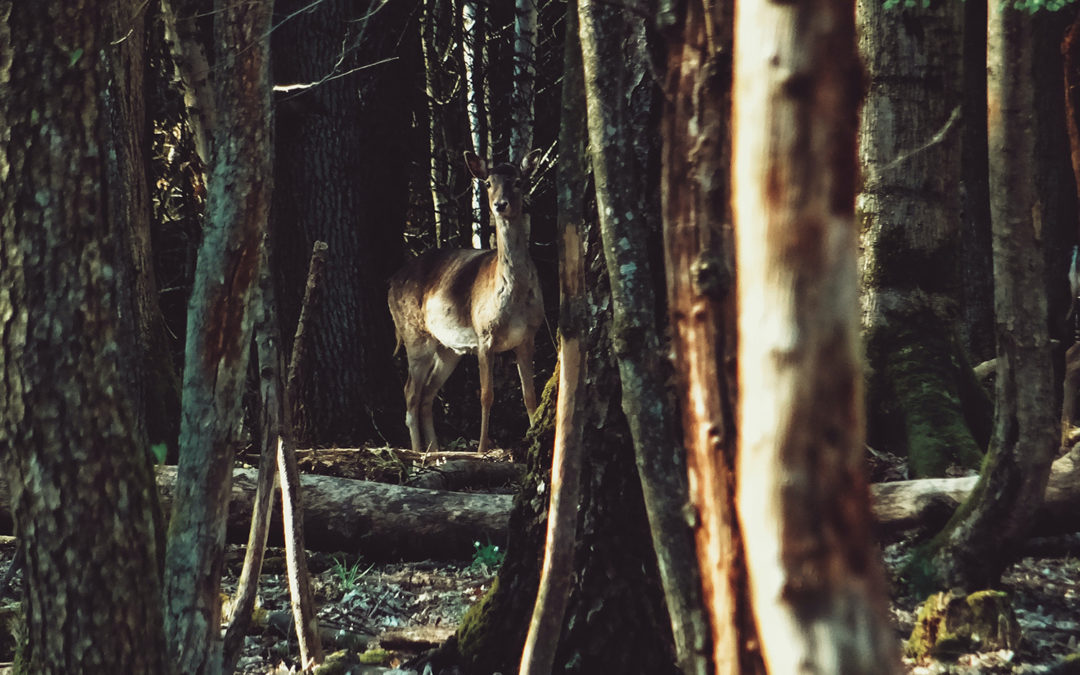God, unlike camouflaged creatures, really wants to be found.
“Those who have found God in the cross of Jesus Christ know how wonderfully God hides himself in this world and how he is closest precisely when we believe him to be most distant.” — Dietrich Bonhoeffer
IT TAKES NO SPECIAL ABILITY, to see and recognize many animals. The leaping, yipping puppy. The elegant, purring cat. The vast whale and elephant, and the small robin and rabbit. We take noticing them for granted. When they travel, it is obvious and open.
But for some animals, being readily observable can spell the difference between life and death. So they camouflage themselves. Whenever I visit an aquarium, I am fascinated by the way certain fish and other sea creatures find clever ways to escape detection. The mimic octopus can impersonate sea snakes, jellyfish and starfish. The leafy dragonfish looks exactly like seaweed. The decorator crab attaches parts of different plants and animals to its body, enabling it to scuttle around, unrecognized and safe. These aquatic “hiders” can be difficult for even the keenest eye to spot.
HIDING TO STAY HIDDEN
On land, we find many other examples of “hidden” creatures. The best-known, of course, are the dramatically color-shifting chameleons. These lizards can change hue depending on which surface they are sitting on. Certain insects, like the walking stick and praying mantis, can resemble twigs, tree bark, leaves or flowers. The white coloration of the polar bear, arctic fox and arctic hare protects them in their snowy habitats. In these cases, camouflage is important, even necessary, for the animals’ survival against predators.
And camouflage can work to the advantage of certain predators, too. The long-eared owl not only blends seamlessly into the forest, but swiftly moves with virtually silent wingbeats. Its target can neither see nor hear the owl coming before it is too late. The leopard, whose light and dark spots blend into the areas of shadow and sunlight on the savanna, uses its invisibility to sneak up on and surprise its prey.
It is as if much of the natural world is a big game of hide-and-seek, and only the most adept at concealment survive and thrive.
But there is another reason to play this game.
HIDING TO BE FOUND
Human children love to play hide-and-seek just for the joy of it. My little grandchildren, Aiden and Peter, very often choose to conceal themselves among the towels in my linen closet. But their giggles always give away their whereabouts, and they are delighted when I fling open the door and “find” them. They know they are in no danger; it’s merely an exciting game with someone they love and trust. They want to be discovered and have faith that they will be.
What kind of “hider” is God? It would seem the Lord is incredibly good at being hard to find. Many people, not seeing God clearly in this world, conclude that God doesn’t exist at all. Others search for God desperately their whole lives, with a certain, limited vision in mind that leads to constant disappointment.
When Jesus walked the earth as God-made-flesh, very few people recognized him for who he was. Christ didn’t announce himself either. Instead, he camouflaged himself with humility; he “hid” among the poor and the outcast. Because the person of Jesus didn’t correspond to the popular vision of a shining, powerful and triumphant God, most people did not recognize him at all.
So even when God took on human form, God was in hiding. But why did, and why does, God hide? Surely God doesn’t need to be camouflaged for God’s survival or protection. And God is not hunting us as prey. Wouldn’t it be easier, better, if we all could instantly and effortlessly just see God?
Dietrich Bonhoeffer, now a saint of the Lutheran church, was a brave pastor, writer and dissident in Germany during World War II. His travels and actions of resistance during the war were, of necessity, clandestine. Eventually, though, he was captured, imprisoned in a Nazi death camp, and executed for being part of a plot to murder Hitler. Where was God in those terrifying and terrible days? For Bonhoeffer’s experience in a concentration camp was enough to shake anyone’s faith.
But this great theologian believed that God could still be found in places and at times God was least expected, hidden in plain sight. Bonhoeffer believed that God was there with him, through it all. His heart was attuned to seeing God. He went to his death in prayer, facing his fate with courage and confidence.
Elise Seyfried is the author of four books of humorous spiritual essays. Her essays have appeared in Living Lutheran and many other publications. Elise is director of spiritual formation at Christ’s Lutheran Church in Oreland, Pennsylvania.
This is excerpted from an article in the November/December 2022 issue. To read more articles like it, subscribe to Gather.

Seen. Heard. Welcomed.
Do you ever go to church hoping you have enough snacks and “stuff” to keep your child quiet and...

Redeeming grace
Coupons, rainchecks and rebates were my dad’s way of saving money on groceries and other household...

Holding to God’s promise
When my husband, Joe, and I moved into our first house In May 2014, we spied squash vines growing...


